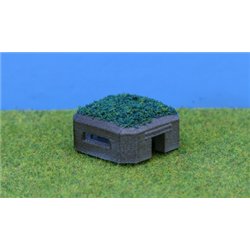Static grass puffer bottles work by manually charging model grass fibres with static electricity. When the charged...
No products
Product successfully added to your shopping cart
There are 0 items in your cart. There is 1 item in your cart.
Search Tips
What is a 3D printer?
A 3D printer is a machine that literally prints three-dimensional objects. That sounds great! and it would be easy to deduce that you can now upload a photo of your favourite locomotive, building or tree, hit the print button, and hey-presto! a brand new model is born. Alas, the technology isn't quite there yet. Sorry!
But 3D printers are very useful nonetheless. 3D printing (also known as additive manufacturing) has been around since the 1980s and involves a design being created on a computer using a special program called CAD which stands for Computer-Aided Design, only once a technical drawing has been produced using this software can you print an object. Using CAD to create anything meaningful requires a certain level of expertise so isn't something that anyone can do at home on a wet Sunday afternoon. So that begs the question where is 3D printing used?
Traditionally, 3D printing has been used to create prototypes for manufacturers. The advantage of using 3D printing to do this is that it can create shapes that often can't be produced by hand-carving such as hollow or incredibly intricate parts. The technology has not progressed to the point where mass-produced objects can be manufactured using the technology because the end product has a shelf life and can break down or come apart after just a few years. Although breakthroughs have been made in recent years to resolve this problem, for the moment, the main application for 3D printing is in manufacturing prototypes.
3D printers are quite industrial looking machines that come in all shapes and sizes, they range in price and ability from very affordable to a very serious investment. They work by using liquid-molecules or powder-grains and fusing them to create a solid material, the printer will apply this plastic-like substance in layers similar to the way a regular printer applies ink to a piece of paper, but once a layer is complete, the printer will lay subsequent layers on top until the design is built up to completion.
3D printers are not yet the manufacturing solution that many perceive, but the benefit of creating better prototypes at least means a better end product.
Click here to receive the tips weekly in your mailbox. You can unsubscribe at any time.









